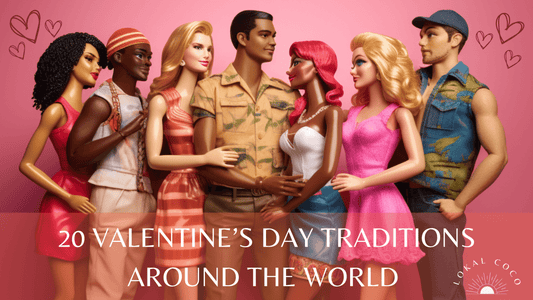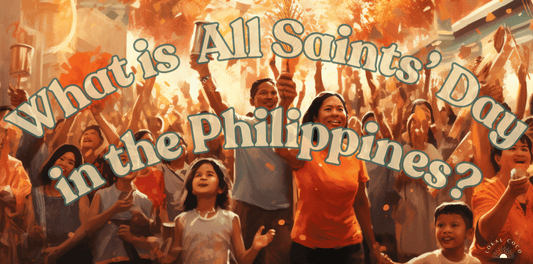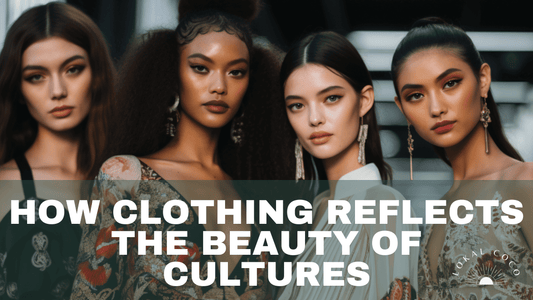Get ready to explore how clothing can beautifully showcase the rich diversity of cultures. Every piece of clothing carries a unique story and keeps our heritage alive. Whether it's Japanese kimonos, Indian sarees, or Scottish kilts, our outfits help us connect with our roots and with each other in today's global world. Join us on a journey to discover how clothing reflects the beauty of different cultures.

How Traditional Clothing Plays a Vital Role in Cultural Heritage
Traditional clothing plays a crucial role in keeping our cultural heritage alive. Let's explore why:
Historical Continuity
Traditional clothing carries designs, patterns, and techniques that have been passed down through generations. When people wear these garments, it's like connecting with their ancestors and the past.

Symbolism
Many parts of traditional clothing have special meanings. The patterns, colors, and accessories often represent cultural beliefs, rituals, or important events. It's a way of passing on cultural knowledge.
Identity
Traditional clothing is like a badge that shows a person's cultural identity. It lets individuals express their membership in a particular group or culture, making them proud and a part of something special.
Rituals and Ceremonies
People often wear traditional clothing during special ceremonies, festivals, and important life events. This keeps cultural rituals alive and adds to the celebrations.
Preservation of Techniques
Making traditional clothing requires special skills and craftsmanship. When communities keep making and wearing these garments, they preserve the traditional ways of creating them.
In short, traditional clothing is like a living history book that tells us about a culture's past, values, and who they are. It's a way of passing down our cultural heritage so that future generations can cherish our unique traditions and wisdom.
The Controversy of Cultural Appropriation in Fashion
Clothing has a unique way of expressing the beauty within diverse cultures, telling stories with each fabric and stitch. But the fashion world, where trends and styles come to life, sees things differently at times. It's not just about stunning outfits and the latest trends; it's also a place where passionate debates about something called cultural appropriation take center stage. But what does that term even mean?
What is Cultural Appropriation?
Cultural appropriation is all about borrowing or copying things from one culture when you're part of another culture. And it's not always done with the best understanding, respect, or permission.
Critics of cultural appropriation worry that it can spread stereotypes and turn sacred or traditional things into just everyday stuff. This can be pretty hurtful and make us wonder who's really benefiting from these swaps.
On the flip side, some argue that the essence of fashion, including cultural fusion fashion, thrives on the free flow of ideas and styles, suggesting that the interplay between different cultures can be a form of appreciation, enriching the industry.
This debate gets into bigger questions about power, privilege, and respect. So, it's not as simple as black and white. When we look at specific cases, things get even trickier.
Take Native American headdresses, for example. They have deep meaning in Indigenous communities, and using them in fashion can be a big no-no.

Source: Insider.com
Or think about African-inspired prints used by fashion brands. Some people get upset because they don't give credit to the cultures they borrowed from.
Traditional Asian outfits like kimonos or qipaos have been used in fashion without understanding their cultural importance. And what about hairstyles like braids, especially when non-Black people wear them? Some say it's cultural appropriation because these styles have roots in African culture and aren't always understood. Even things like bindis and henna tattoos can be a problem when used as fashion accessories. They're important in South Asian traditions.
All these examples show that the fashion world needs more cultural awareness and education. They remind us to be more considerate, respectful, and authentic when we use elements from different cultures. The conversation keeps going, making us think about what's offensive and what's respectful in the always-changing world of fashion.
How does street fashion contribute to reflecting the beauty of cultures?
Street fashion in urban environments reflects cultural diversity by serving as a vibrant canvas where individuals from various backgrounds express their heritage, tastes, and identities through their clothing choices. Here's how it happens:
A Cultural Mosaic
Urban environments often resemble cultural melting pots, with people from different corners of the world living close together. Amid this vibrant diversity, street fashion becomes a visual celebration of the many coexisting cultures. People naturally draw inspiration from their own roots and those of their neighbors and fellow city-dwellers.
Mix and Match Magic
Urban street fashion is all about mixing different styles, patterns, and traditions. Here, individuals feel free to blend clothing elements from various cultures, resulting in unique and eclectic looks. This style of mixing reflects a spirit of openness and acceptance, where diversity isn't just welcomed; it's embraced.
At Lokal Coco, we're passionate about exploring and celebrating our heritage in a modern and playful way. Check out our international sports club hoodies like the "Seoul Fencing Club Hoodie," "Palawan Rock Climbing Club Hoodie," and "São Paulo Tigers Pickleball Club Hoodie." These might not be real clubs, but they showcase our playful approach to celebrating the love for these places.




Palawan Rock Climbing Club Hoodie


São Paulo Tigers Pickleball Club Hoodie
Social Connections
Urban street fashion often emerges from social interactions and exchanges among individuals from diverse backgrounds. It's quite common for friends and neighbors to influence each other's clothing choices. These exchanges foster cultural appreciation and understanding, contributing to a broader sense of unity within the community.
A Canvas for Expression and Identity
Clothing in urban environments serves as a powerful tool for expressing one's cultural identity. People proudly wear clothing items that connect them to their roots, traditions, and values. This visible expression fosters a sense of pride and belonging, even for those far from their places of origin.
Local and Global Inspirations
Urban fashion doesn't just draw from local influences; it's also influenced by global trends. In many cities, people are not only aware of but also incorporate fashion trends from around the world. This global awareness and inclusivity underscore the interconnectedness of cultures and the adaptability of fashion in embracing diversity.
Celebrating Diversity
What truly sets urban street fashion apart is its celebration of differences. Rather than homogenizing cultures, it elevates and showcases their distinctions. The streets become a platform for displaying the beauty of diverse backgrounds and heritages.
So, the next time you spot someone in the city wearing clothes that reflect their culture, remember they're part of a vast and diverse community. Urban street fashion is a language that speaks of unity, respect, and the beauty of our many cultures coming together.
The Role of Clothing in Cultural Revival and Celebration
Clothing plays a crucial role in reviving and celebrating culture by connecting people to their heritage and traditions. When people wear traditional or culturally significant garments, they're not just dressing up; they're honoring their roots and keeping age-old customs alive.
Japanese Culture & Traditions
Take the kimono, for instance, a profound symbol of Japanese culture and tradition. Rich in history, it graces special occasions such as weddings and tea ceremonies, encapsulating the essence of Japanese heritage.

Ghana Culture & Traditions
Similarly, the kente cloth weaves stories of Ghana. Handwoven with distinct patterns and colors, each conveying specific meanings, it finds its place in cultural ceremonies and celebrations.

These garments are like powerful symbols, reminding people of where they come from and the stories and values passed down through generations.
Additionally, by sharing these traditions with others through their clothing choices, they contribute to a broader understanding and appreciation of diverse cultures.
The Role of Clothing in Social and Political Movements
Clothing plays a vital role in social and political movements, acting as a potent tool for expression, unity, and protest. It allows people to visually show their backing for various causes or movements.
Civil Rights Movement
During the Civil Rights Movement in the United States, activists used clothing to express their commitment to equality and justice. Iconic items like "Freedom Now" t-shirts and the Black Panther Party's berets became symbols of the movement.

Source: National Museum of African American History and Culture
LGBTQ+ Rights Movement
The rainbow flag, designed by Gilbert Baker, became a symbol of pride in the global LGBTQ+ rights movement. Many people wear clothing featuring rainbow colors or the flag itself during LGBTQ+ pride events to show their support.

Environmental Activism
Environmental activists frequently use clothing with slogans like "Save the Planet" or "Climate Action Now" to raise awareness and mobilize support for environmental causes.

Source: TeePublic
#MeToo and Women's March Movements
In recent political movements like #MeToo and the Women's March, participants often wear clothing with slogans like "Time's Up" and "Nevertheless, She Persisted" to express their solidarity and demand social change.

Source: Los Angeles Times
These examples illustrate how clothing has been a powerful means of expression and unity in various social and political movements.
Global Influences on Clothing
Globalization has reshaped the fashion world, introducing a delightful fusion of diverse styles and cultural influences. Now, fashion designers can easily draw inspiration from different parts of the world to craft unique and exciting collections. People worldwide can explore and adopt clothing traditions from across the globe, making their style more versatile and inclusive. However, there's a downside too.
The fast fashion boom, spurred by globalization, has resulted in swift changes in trends, and this isn't great for the environment. The rapid turnover of fashion can contribute to pollution and waste, which hurts our planet.

Even though globalization has brought great things to fashion, it's also raised important questions about cultural respect and understanding.
Cultural Values and Sustainable Fashion
Cultural values play a significant role in shaping choices within the realm of sustainable and ethical fashion. Different cultures often hold unique beliefs and principles that influence their approach to clothing.
For example, some cultures have a deep-rooted connection to nature and prioritize eco-friendly materials and production methods. Others emphasize the importance of fair labor practices and support ethically made clothing. As consumers become more conscious of the environmental and social impacts of their fashion choices, these cultural values can guide them towards sustainable options.
Integration of Cultural Traditions into Sustainable Fashion
In recent years, there has been a growing movement to integrate cultural traditions into sustainable fashion. This approach acknowledges the rich heritage of various cultures and seeks to celebrate and preserve traditional clothing practices.
By incorporating traditional garments, techniques, and materials into contemporary fashion, designers are not only paying homage to these cultural traditions but also promoting sustainability. This practice often involves collaboration with artisans and craftspeople from different cultures, fostering a sense of respect, appreciation, and cultural exchange.
For instance, Consciously, a curated marketplace for sustainable fashion goods makes finding and buying ethical clothes super easy. They find, check, and pick out sustainable pieces from brands that are all about doing fashion the right way. Their approach is a fantastic way to celebrate fashion in a positive and meaningful way.
The Influence of Diverse Fashion Representation
Diverse fashion representation in the media is not just important; it's a powerful tool. It allows us to peek into the vibrant cultural mosaic that shapes our global community. But it doesn't stop at looking good; it's about breaking down stereotypes and fostering a deeper understanding of diverse cultures.
Transforming Cultural Perceptions
In the world of fashion, increased representation in the media is a game-changer, extending far beyond setting trends. It reshapes how we perceive different cultures, challenging preconceived notions and dispelling stereotypes. One iconic moment worth discussing is when Gucci introduced Sikh turbans.

Source: NBC News
This particular incident serves as a reminder that while fashion can be a powerful medium of expression, it must be approached with cultural awareness and respect.
Gucci faced criticism in 2018 for featuring Sikh turbans in a runway show during Milan Fashion Week. Critics argued that selling these turbans, priced at almost $800 each, amounted to cultural appropriation, as they held deep religious significance for Sikhs.
The Sikh Coalition, an advocacy organization, emphasized that the turban isn't just a fashion accessory but a religious article of faith. It's viewed as sacred by millions of Sikhs around the world, serving as a way to identify themselves as members of their faith.
This incident highlights the need for a more considerate and authentic approach when fashion intersects with culture.
Challenging Conventional Wisdom through Virtual Fashion and Digital Identity
The world of fashion is evolving, and with it, conventional wisdom is facing new challenges. The emergence of virtual fashion and the concept of digital identity is transforming the way we think about clothing and representation. Here's how these innovations are reshaping the fashion landscape and disrupting traditional norms:
Virtual Fashion: A Paradigm Shift
Virtual fashion is a groundbreaking concept that defies the conventional wisdom that clothing must be tangible. It introduces a new dimension to style, where digital garments are as valid as physical ones. In virtual spaces, individuals can express themselves through clothing that exists solely in the digital realm. This challenges the traditional idea that fashion is tied to physicality and prompts us to rethink the value we place on material clothing.
For instance, the groundbreaking sale of the "Iridescence" digital dress, which exists solely in the digital realm but sold for $9,500, as reported in Forbes, showcases the growing significance of virtual fashion and the demand for digital identity in the modern world. This digital-only dress is a testament to the evolving landscape of fashion, where the boundary between the physical and virtual realms is increasingly blurred.

Image source: The Fabricant
The Impact of Digital Identity
Digital identity encompasses how individuals present themselves online, including their fashion choices. In the digital sphere, people curate their online personas, reflecting their personalities, beliefs, and style preferences. This digital representation challenges the conventional belief that fashion is confined to the physical world.
The clothes people choose for their avatars or digital personas become a significant part of their self-expression, blurring the line between the physical and virtual realms.
The Influence of Digital Spaces
Digital spaces are shaping the way clothing is represented and perceived. Online platforms, social media, and virtual worlds provide a stage for individuals to showcase their unique styles and challenge traditional norms. This impact is particularly evident among digital influencers and content creators who use digital spaces to push the boundaries of fashion, emphasizing that creativity knows no bounds.
These digital innovations challenge the conventional wisdom that clothing and fashion are solely about the tangible and material. They open up new avenues for self-expression, blur the lines between the physical and virtual, and redefine how fashion is represented and experienced. Embracing virtual fashion and digital identity can lead to a more inclusive and diverse understanding of personal style and expression.
Conclusion
In the ever-changing world of fashion, one thing always holds true: the chance to embrace and enjoy the diversity of cultures, respect age-old traditions, and express your unique style. Whether you're wearing traditional clothes, rocking street fashion, or expressing yourself digitally, the world of clothing is a canvas for celebrating culture.
At Lokal Coco, we're all about celebrating diverse cultures through our clothing. Our mission is to offer clothes that draw inspiration from around the globe, allowing you to reconnect with your heritage and have fun exploring various cultural styles. Dive into our Heritage Threads collection and join the celebration, making a meaningful fashion choice that reflects the beauty of diverse cultures.




